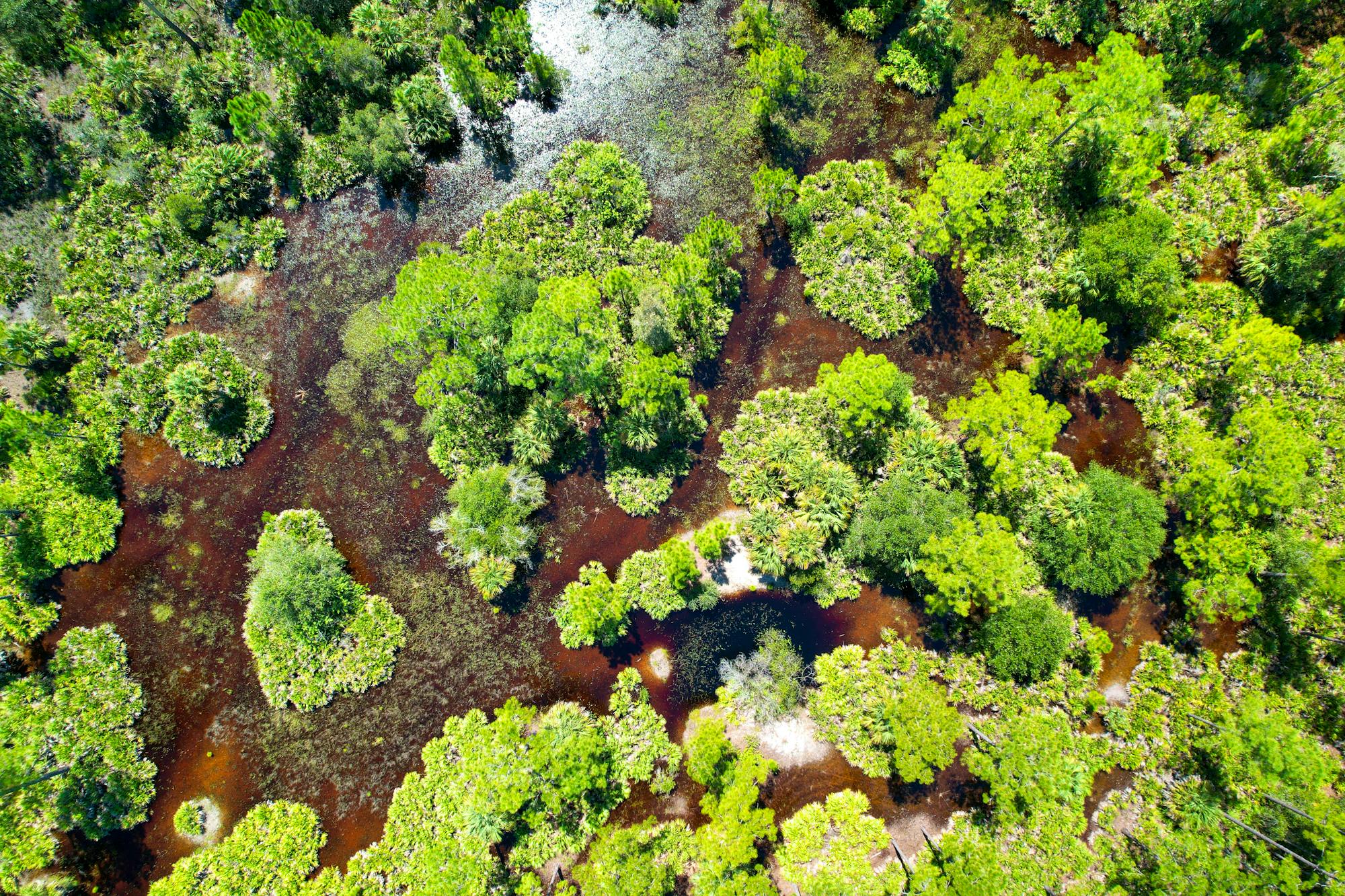A flatland with tall grasses blowing in a gentle breeze. A mountain range with high, snow-capped peaks and low river-flowing valleys. A forest with leaves changing from green to red and yellow. A wetland with mangroves climbing out of the slow-moving, grassy water.
All these habitats are threatened and shrinking from human activity. The result? Our planet's biodiversity is facing unprecedented challenges, including a rapid massive loss of wildlife. It is up to us to reverse the damage and rebuild ecosystems to their former health, functionality and diversity. This repair process is known as habitat restoration.
Defenders of Wildlife protects habitats and wildlife throughout North America. Let’s look at four habitats Defenders is working to restore and explore why habitat restoration is important.
Why is habitat restoration important?
The Great Plains
The Great Plains once had an abundance of wildlife unmatched anywhere else in North America. Unfortunately, much of the landscape has been converted to agriculture and developments, with intensive livestock grazing creating an imbalance. Between increasingly limited space for the animals to thrive and poor management of imperiled and keystone species, the biodiversity in this region has taken a major hit.
Restoring habitats helps protect biodiversity by providing essential resources and suitable conditions for diverse organisms to thrive. This, in turn, ensures the stability and resilience of ecosystems and their species.
In the Great Plains, Defenders works with public, tribal and private landowners and managers to protect and restore the regions’ most imperiled wildlife like the endangered black-footed ferret, keystone species like bison and prairie dogs, and the large landscapes on which all the species depend.
The Rocky Mountains
The Rocky Mountains ranges from Alaska to Mexico and contains a diversity of habitats including coniferous forests, subalpine meadows, grasslands, sagebrush and thousands of miles of streams and rivers, including headwaters for the continent’s major river systems.
Human development is one of the greatest threats to the Rocky Mountains. Stream flows are declining as the water is diverted and over-allocated for development, agriculture and energy production. Diminishing and fragmented habitat forces wildlife to navigate neighborhoods, highways, livestock and people, increasing chances of conflict between animals and humans.
Intact habitats provide spaces for wildlife and outdoor recreation, promoting physical and mental well-being. Additionally, attracting tourists and nature enthusiasts increases the opportunities for ecotourism and bolsters local economies. As recreation continues to rise in the Rocky Mountains, it is equally important to educate and guide visitors, so they and the animals crossing their trails can remain safe.
Defenders promotes coexistence between humans and wildlife through the implementation of nonlethal tools. These tools — including electric and traditional fencing, livestock guard dogs, range riders, fladry and aversive conditioning — can reduce conflicts and safeguard personal property while still protecting wildlife like gray wolves, grizzly bears, bison and beavers.
Deciduous Forests
The beauty of deciduous forests goes deeper than their autumn leaves. In the eastern U.S., these forests are home to a spectacular array of animals and plants, making some areas like the Appalachian Mountains critically important for conservation at the global level.
Despite U.S. laws and varying state and private management practices, many forests are threatened by unsustainable forestry practices. Excessive logging and resulting fragmentation destroy habitat for imperiled species and force wildlife to make dangerous journeys across busy roads. Climate change, with warming temperatures and changing precipitation levels, has shifted the optimal zones for many tree and plant species, forcing some that anchor the ecosystem to move north. Delayed winters, early spring freezes and warm spells cause changes in flowering or fruiting times, sometimes starving wildlife.
National forests often represent intact, connected habitat and are one of the only suitable remaining habitats for recovery and reintroduction of rare creatures. Additionally, restoring habitats helps maintain ecosystem services, like clean air and water, pollination, climate regulation and nutrient cycling which benefit wildlife and human communities.
Defenders is advancing wildlife conservation through national forest planning across the U.S., working with state and local agencies to protect state parks, and advocating for science-based management of privately owned forests. Where intact habitat is lacking, Defenders helps establish wildlife corridors. These strips of connected habitats enable animals to move safely between fragmented landscapes.
The Greater Everglades
The Greater Everglades Ecosystem houses some of the highest biodiversity in the nation. More than 120 federal and state endangered and threatened species depend on the region’s varied wetland, upland and marine habitats. This ecosystem also provides clean water to one-third of all Floridians.
Despite its importance, the Greater Everglades has been halved from draining and other engineering for human development and agriculture to support Florida’s ever-growing population. Additionally, the sea level is projected to rise three feet or more over the next century, threatening much of the low-lying ecoregion to submersion.
As climate change impacts the severity and frequency of storms, it is critical to protect and restore habitats that act as a natural buffer zone against natural disasters. The wetlands, swamps and marshes within the Everglades system can absorb excess rainfall to reduce the risk of flooding.
Defenders is a consistent force working to secure conservation gains across this unique landscape. This includes collaborating with large landowners to conserve habitat on private lands, advocating for land acquisition and conservation easements, and securing and expanding national wildlife refuges and other public conservation lands in and around the Greater Everglades.
Be sure to explore other habitats Defenders is working to protect and restore across the nation by visiting defenders.org/wild-places.
Your support ensures our expert team of scientists, lawyers, advocates and activists have the resources needed to demand action and protection for wildlife across the nation.
Donate Today!










Follow Defenders of Wildlife
facebook bluesky twitter instagram youtube tiktok threads linkedin